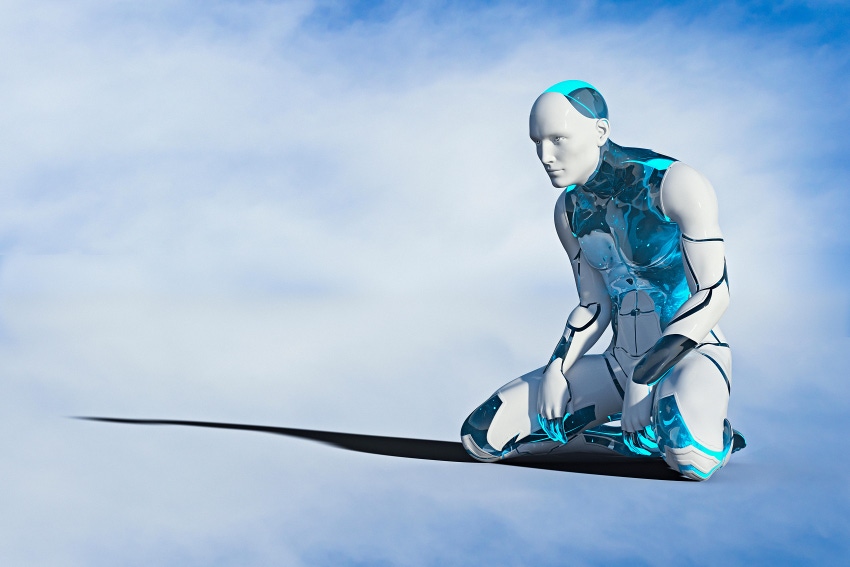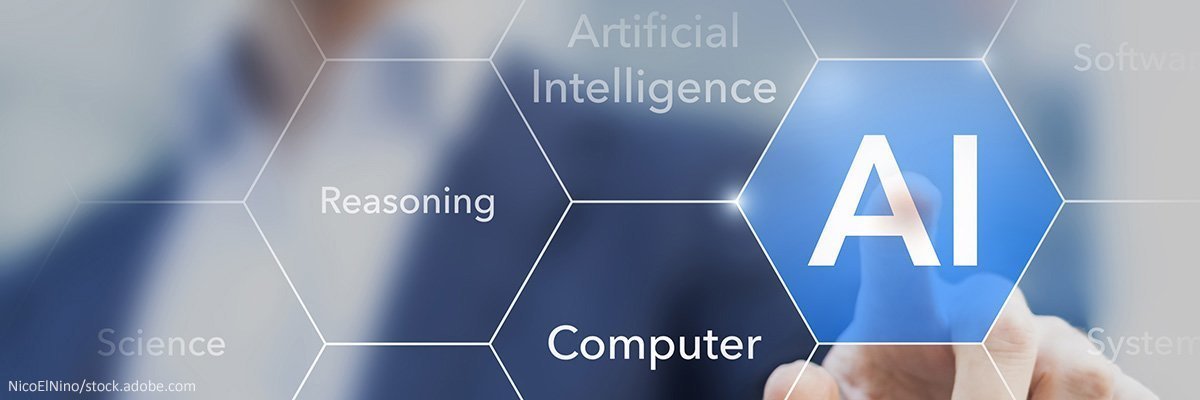The Big Threat to AI: Looming Disruptions

As if semiconductor supply chain issues weren’t enough of a problem for AI
production, other supply chains are piling on the challenges. "AI is software
and open-source code makes up 90% of most codebases, which means the open source
software supply chain has just as much, if not more, impact on AI production
than regulated hardware components,” says Feross Aboukhadijeh, founder and CEO
of Socket. The impact is potentially widespread given there are many open source
AI models and tools on the market today and more are coming. ... There are
numerous efforts afoot to relieve these concerns and secure a prime slice of the
AI market pie. For what corporation does not envy Nvidia right now? “Many
countries are trying to increase their piece of the global supply chain capacity
and/or to onshore as much as possible through subsidies and other incentives.
This has spurred significant investment and activity, but it remains to be seen
whether these investments will address the supply chain problems in a timely or
appropriate manner,” says Almassy.
When to Scale and When Not to Scale

Scaling is a nuanced decision in the agile journey, bridging the demands of
complexity and rapid market needs. While the lure of scaling promises greater
coordination, efficient handling of product intricacies, and swifter market
responses, it's pivotal to approach it judiciously. It's not just about
expanding teams or implementing frameworks; it's about recognizing when the
product's complexity or market dynamics truly warrant a scaled approach. On the
flip side, scaling without a clear strategy can introduce unforeseen challenges.
From the inadvertent hiring of too many junior roles to the formation of
functional silos, scaling can sometimes complicate rather than streamline.
Additionally, foundational elements, such as a firm grasp of agile practices and
automation, can determine the success of scaling endeavors. In essence, scaling
is a tool in the agile toolkit—powerful when used correctly but potentially
counterproductive if misapplied. Organizations must reflect on their unique
scenarios, understanding both the promises and pitfalls of scaling, to ensure
they chart a path that genuinely enhances agility, efficiency, and value
delivery.
From Big Data to Better Data: Ensuring Data Quality with Verity

High-quality data is necessary for the success of every data-driven company.
It enables everything from reliable business logic to insightful
decision-making and robust machine learning modeling. It is now the norm for
tech companies to have a well-developed data platform. This makes it easy for
engineers to generate, transform, store, and analyze data at the petabyte
scale. As such, we have reached a point where the quantity of data is no
longer a boundary. Yet this has come at the cost of quality. ... Poor data
quality in Hive caused tainted experimentation metrics, inaccurate machine
learning features, and flawed executive dashboards. These incidents were hard
to troubleshoot, as we had no unified approach to assessing data quality and
no centralized repository for results. This delay increased the difficulty and
cost of data backfills. The lack of centralization in data quality also made
the data discovery process inefficient, making it hard for data scientists and
data engineers to identify trustworthy data.
AI vs software outsourcing: An opportunity or a threat?

As AI becomes more widespread, the question is whether programmers write code
themselves or have chatbots write it. Customers usually expect quality. If AI
can help deliver this quality faster, why not? Look, everyone knows that there
is a programming language called Java. There are Apache Commons libraries. You
can Google it, but can you do something with it? Can you bring value to the
business? This is the point. LLM models are a tool, just like a library or a
framework. However, it has other capabilities that need to be mastered and
used to bring value. It will be a long time before AI can replace developers
because there will always be something that needs to be fixed. Either it's an
error in the code or something wrong with the configuration. For example, if a
bot has already written code that seems to work, but an error appears. The
developer can spend little time writing the code but later spends more time
looking for the error. Let's take GitHub Copilot. Programmers note that the
acceptance rate of suggestions from Copilot is up to 40%.
Why all IT talent should be irreplaceable

“Great employee” is easy to type. It’s less easy to define. Here’s a short
list to get you started. Scrub it by discussing the question with your
leadership team. The habit of success: Some employees seemingly don’t know how
to fail. Give them an assignment and they’ll figure out a way to get it done.
Competence: As a general rule, it’s better to apologize for an employee’s bad
manners than for their inability to do the work. Without competence, employees
with a strong success habit can do a lot of damage by, for example, creating
kludges instead of sustainable solutions. Followership: Leadership is a prized
attribute for employees to have. Prized, that is, if they’re leading in their
leader’s direction. Otherwise, if you and they are leading in different
directions, all your prized leaders will do is generate conflict and
confusion. Followership is what happens when they embrace the direction you’re
setting and make it their own. Intellectual honesty: Some employees can be
persuaded with evidence and logic. Others trust their guts instead. That’s a
physiological error. You want people who digest with their intestines but
think with their brains.
Do you need both cloud architects and cloud engineers?

We need a collaborative approach with both disciplines. One cannot function
properly without the other. For example, I cannot design multicloud-based
systems that define different usages for different cloud services on different
clouds. ... Many assume that the engineering tasks are the easiest part of the
journey to the cloud. After all, if the cloud architect is good, the
configuration should work, and it’s just a matter of using sound AI tools to
carry out deployment. Even worse, some companies are working just with
engineers and hiring specific skills. The company may pick a cloud brand and
hire security, application, data, and AI engineers in that cloud platform.
They assume that this specific cloud platform is the correct and optimized
platform, which will usually cause trouble. Oh, the solutions may work, but it
could cost 10 times more to operate. Not surprisingly, these companies have an
underoptimized architecture since they’ve given zero consideration to
architecture or the use of cloud architects. AI won’t save you from needing a
good architecture and a good set of engineering disciplines.
What IT needs to know about energy-efficiency directives for data centers

New regulations springing up in various regions will be among the drivers of
data center sustainability in the months ahead. There are two main groups of
regulations emerging that affect data center operations, according to Jay
Dietrich, research director of sustainability at Uptime Institute. One is
financial reporting modeled on the Task Force for Climate-related Financial
Disclosures (TCFD), which requires reporting on energy consumption and
efficiency and associated greenhouse gas (GHG) emissions. The other is the
European Energy Efficiency Directive (EED), which requires an energy
management plan, an energy audit, and reporting of operational data. In
addition, there are voluntary, country-specific standards and siting
requirements for data center efficiency and operations in various countries
around the world, Dietrich says. A current example of a TCFD-related
regulation is the E.U. Corporate Sustainability Reporting Directive (CSRD),
with reporting requirements rolling out from large to small enterprises
beginning in 2025 and continuing until 2028.
What does leadership in a hybrid world look like?

Firms want their best people to stick around and give more of themselves.
Studies have shown that improved employee collaboration and alignment with a
common purpose is key to achieving that. But what is the best way to make that
happen in the way we now wish to work and live our lives? Some suggest that
the emergence of generative AI and new work tools can improve productivity
regardless of the workplace setting. But perhaps a different, more human,
approach is needed? The profound loosening of relationships that employees
have with their firm and one another, requires a similarly fundamental
reimagining of the role of the leader itself. Ultimately, this will not come
through new technology, systems, processes, or HR policy (however
well-crafted), but through the actions and behaviours of credible and engaging
people managers. Firms need to re-establish a sense of cohesion and that needs
people who are exceptional good at doing just that. Businesses can’t just
issue ultimatums or mandates; they need a leadership approach that “coheres”
employees to feel less remote from one another and the firm.
Six skills you need to become an AI prompt engineer

Prompt engineering is much more of a collaborative conversation than an
exercise in programming. Although LLMs are certainly not sentient, they often
communicate in a way that's similar to how you'd communicate with a co-worker
or subordinate. When you're defining your problem statements and queries, you
will often have to think outside the box. The picture you have in your head
may not translate to the internal representation of the AI. You'll need to be
able to think about a variety of conversational approaches and different
gambits to get the results you want. ... While you might not necessarily be
expected to write the full application code, you will provide far more value
if you can write some code, test your prompts in the context of the apps
you're building, run debug code, and overall be part of the interactive
programming process. It will be much easier for a team to move forward if the
prompt engineering occurs as an integral part of the process, rather than
having to add it in and test it as a completely separate operation.
The Cost Dynamics of Multitenancy
Isolating tenants with infrastructure has a higher initial cost, especially as
you discover the right size for tenant workloads. Once you understand the cost
for a tenant, it provides a very stable cost per tenant. Any unevenness in the
cost profile represents a choice of timing. For example, if you use containers
per tenant, you must decide when to commission your next cluster.
Software-based multitenancy has an early advantage as it keeps the initial
product price low. The marginal economics of onboarding a tenant are very low
— almost zero. There comes a point when the initial design can no longer
manage the load. The first port of call is vertical scaling — adding more
power to the infrastructure to handle the load. This increases the cost per
tenant but enables further tenants to be added. Eventually, you run out of
vertical scaling options and look to horizontal scaling. This requires more
investment as you need to handle load balancing, re-architect stateful
interactions and introduce technologies such as shared cache.
Quote for the day:
"When you stop chasing the wrong
things you give the right things a chance to catch you." --
Lolly Daskal
No comments:
Post a Comment